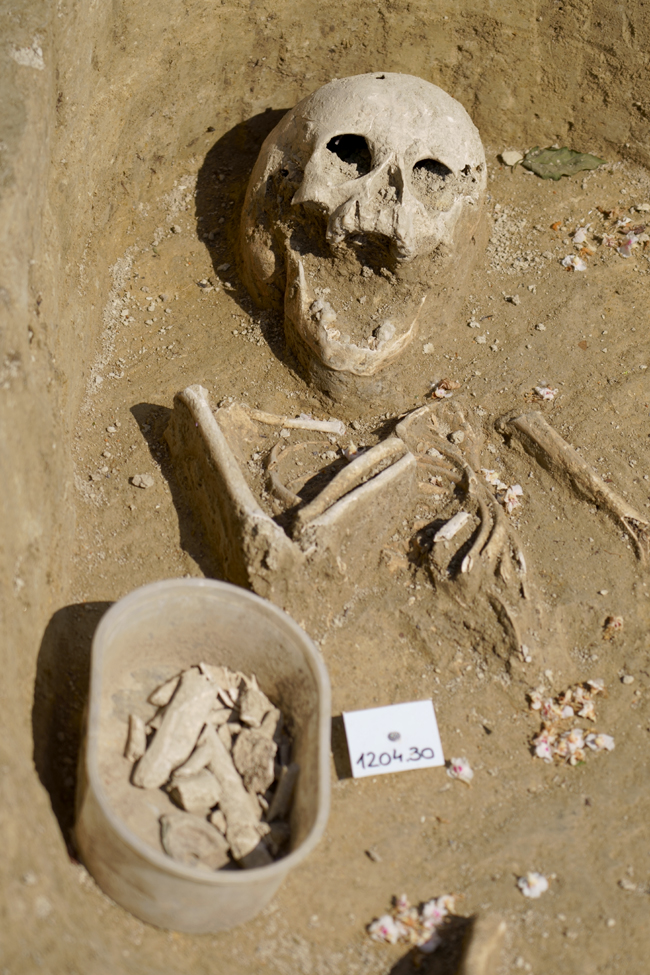The number of people buried in Óbuda’s largest ancient cemetery could be on the order of 100,000. A new section of the former necropolis has now come to light thanks to preventive excavations at 68-84 Bécsi Road.
While a number of burial sites are known from Roman Aquincum (the Military Town and Civil Town), the largest of these was the cemetery that runs roughly along the modern-day Bécsi Road. Its sheer size is impressive: the southernmost burials were identified near Kolosy Square, while the northernmost graves were found beyond the intersection of Bécsi Road and Vörösvári Road. Where the Bécsi Road now runs, there was a road in antiquity as well. Along it, to the west, the area towards the Buda hills was used for burials from the late-1st century until the early-to-mid-4th century, i.e. for over two hundred years.
On the 68-84 Bécsi Road lot – previously used as a car park and now set to be built up – an, in urban terms, large-scale excavation is in progress under the leadership of archaeologist Péter Vámos of the Budapest History Museum’s Aquincum Museum. While the lot has been empty in recent years, during the 18th-19th-century expansion of Buda, Swabian settlers had built their single-storey houses here, which usually had cellars. These destroyed the archaeological layers, thus a part of the cemetery. Also complicating the excavation on the side closer to the Danube is the relatively high level of groundwater. One-and-a-half-to-two millennia ago, one of the Danube’s branches ran much closer than the current watercourse. It was regulated and filled in only in the Modern Period.
In the cemetery section unearthed a few weeks ago, already over 100 burials could be identified. These were party cremations and partly inhumations. In the latter case, bodies were buried mostly in a north-south or south-north direction. In many instances the vessels buried with the bodies too remained in good condition. Due to the frequent use of the cemetery, intersecting graves are common: in one of the trenches five intersecting graves were identified.
This will most likely be the largest investigated contiguous section of the former Bécsi Road ancient cemetery, as the excavations will continue further north later on in the year.
The article and the photographs originally appeared on regeszet.btm.hu (in Hungarian).
Click here to read the previous entries of the Aquincum Museum’s blog.






